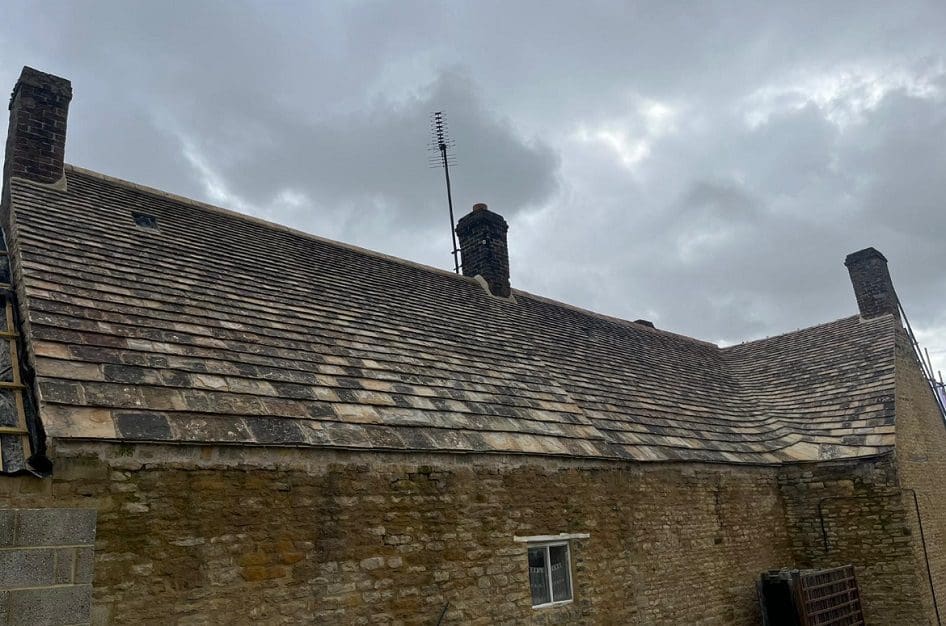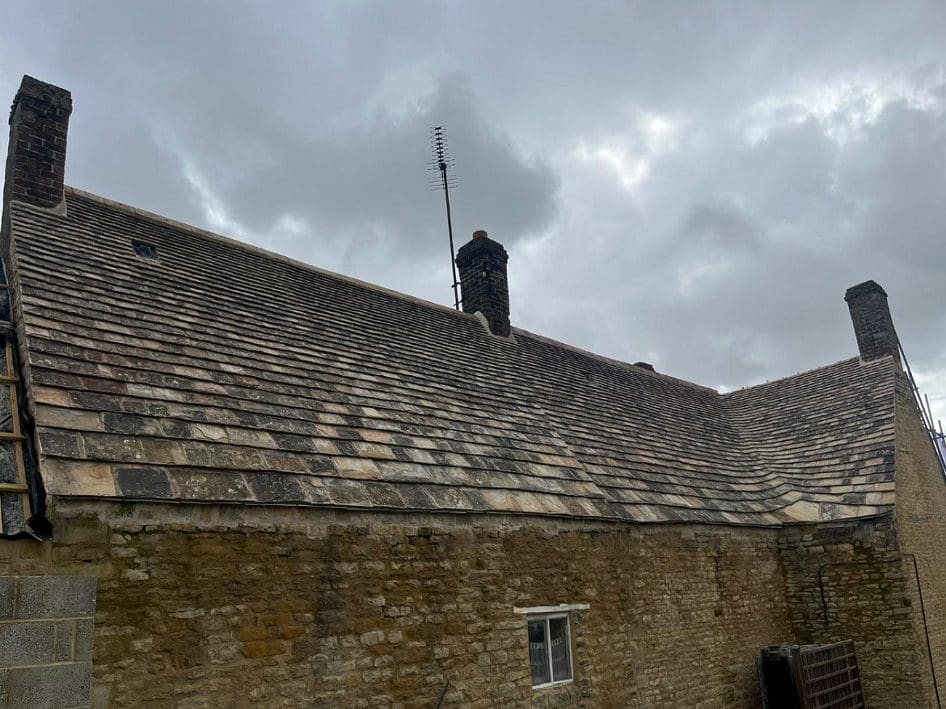Collyweston Laced Turned Valley

The Charm of Collyweston Laced Turned Valleys
Every Collyweston laced turned valley is unique, as this re-slating project in Bulwick, near Corby, demonstrates.
We had the pleasure of re-slating this Collyweston roof and handcrafting a unique design for the roof’s turned valley section. This exciting project allowed our slaters to showcase their exceptional skills. As the photos show, the design was unusual and one-of-a-kind. It’s fair to say that there will never be another Collyweston laced turned valley like this one. The final project demonstrates our team’s level of mastery and is a credit to their years of experience.
What is a laced turned Collyweston Valley?
The term “laced turned Collyweston valley” refers to a specific type of roofing feature and technique associated with Collyweston slate roofing.
A roof valley is where Collyweston slates are used and laid in an interlocking (laced) manner. The slates potentially have a specific orientation or pattern (turned) to ensure proper drainage and watertightness. This technique combines traditional craftsmanship with the unique properties of Collyweston slate to create a durable and visually appealing roofing feature.


Let’s break down the roofing terminology
Valley: In roofing, a valley is an internal angle formed by the intersection of two sloping roof planes. It is a crucial design element that efficiently channels rainwater off the roof, preventing potential damage.
Laced: In roofing, “lacing” refers to the method of overlapping slates so that they interlock, providing a watertight seal. This technique is often used in valleys to ensure water flows smoothly without penetrating the roofing material.
Turned: This refers to the specific method of how the slates are arranged or oriented in the valley. “Turned” can imply a particular pattern or direction in which the slates are laid.
Creating a laced-turned-Collyweston Valley is a specialised task. The job requires high skill and expertise in traditional roofing techniques. Like many others, this project showcases our team’s knowledge and dedication. Moreover, it emphasises the importance of using only skilled experts for such an important task.